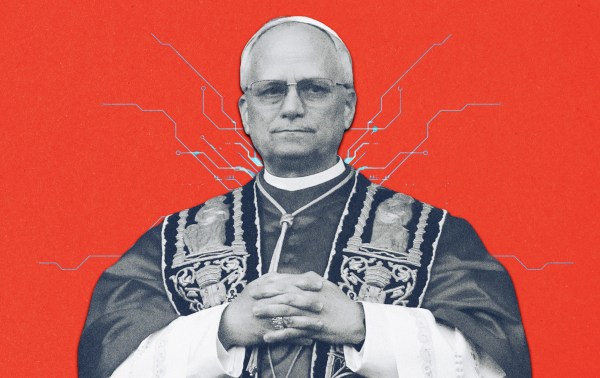Americans are pessimistic about almost everything these days, and in many cases, for good reason. The climate, their personal safety, the value of their 401(k)s, the cost of housing: It’s a wonder we’re not living in the midst of a national insomnia epidemic. A Pew survey published earlier this month, adds one more to the list of worries: the American family. “Americans are more pessimistic than optimistic about the institution of marriage and the family,” the report concludes. At the risk of adding to the general sleeplessness, I would point out that a closer reading of the report suggests Americans are actually not pessimistic enough.
Arguably the most decisive trend of the past half century of social change is the decline in the percentage of children growing up with two married parents. Close to—but not quite—half of the Pew respondents say this is “a problem for the country’s future.” But 39 percent say it’s neither positive nor negative, while the remaining 11 percent say the surging number of children growing up apart from at least one parent is actually a good thing. Extrapolating from that, we can conclude that a little more than half of the population thinks it’s just not a big deal. That majority is composed of more women than men, more young adults than older, and more Democrats than Republicans.
What’s startling about these findings is that decades of research—most recently and fully laid out by economist Melissa Kearney in her new book The Two-Parent Privilege—tells us that the 51 percent is just plain wrong. On the most basic level, children growing up in a single parent household have fewer resources: less money, less parental time, and less stability. They are at a higher risk of behavior problems and dropping out of high school, not going to college. If they do go to college, they’re also at a higher risk of failing to complete their degree.
The vast majority of children with unmarried parents live with their mothers. Parents who cohabit without being married have a much higher likelihood of breaking up within a few years after a baby is born. Once that happens, fathers tend to become either occasional visitors or, in too many cases, entirely MIA in part because both parents often go on to other relationships and start new families. Boys in particular suffer without their fathers in the house, and statistically speaking, having a stepfather doesn’t seem to help.
Skeptics usually counter that it’s not fatherlessness or single motherhood but poverty that explains these discrepancies. Not likely. Competent studies—and there are many of them—control for parental income, education, age, and a host of other variables. Other doubters cling to the belief that if we were just more accepting of single parenthood, these problems would disappear. Another result in Pew’s study suggests otherwise: 78 percent of respondents think raising a child alone is either somewhat or completely acceptable. In fact, increased acceptance has coincided with worse outcomes for the children. Another new report, this one from the Institute for Family Studies, concludes that “family instability is more strongly linked to worse outcomes for kids than it used to be.” The financial, social, and emotional welfare of the children of single parents has declined relative to that of their peers growing up with their two parents, even as their numbers have grown.
Some of the Pew results raise the suspicion that people’s beliefs, at least those they’re willing to share with pollsters, don’t tell us much about their actual behavior. Blacks have by far the lowest rate of married births and highest rates of single mother households. Yet they are the least likely of all racial and ethnic groups to say that a child growing up with a single parent is “acceptable.” (Sixty-six percent say it is acceptable, compared to 81 percent of whites and 77 percent of Hispanics.) Similarly confusing is the fact that though Asians have the highest rates of intact two-parent families of all groups, they are only 1 percentage point lower in finding single parenthood “acceptable” than Hispanics, whose rates of single parenthood are much higher. Asian respondents were limited to English speakers, and perhaps that group could be more susceptible to social desirability bias—giving an answer according to what they believe are social (in this case American) expectations—than recent immigrants are.
The survey’s terminology adds to the muddle. The researchers asked subjects whether they find a particular arrangement—married couples raising children, single mothers raising children, same sex couples raising children, open marriage—“acceptable” or “unacceptable.” A dictionary would define acceptable as tolerable or allowable. These are crude terms that can’t capture the nuances of an intimate subject. If a friend tells me she wants to have a baby on her own, I may find it sad that her child won’t have a father living with her, and ominous that so many other American children are in the same boat. But of course it’s tolerable.
What I suspect is happening here is that the authors are trying to avoid words that would make respondents feel like they are passing judgment on people’s private lives and decisions. That’s understandable. It’s an article of American faith that people should be free to live the lives they want, or as the youngs might put it, to be “true to their authentic selves.” And let’s face it: Most of us know children who come from a single-parent household who are thriving in adulthood. Likewise, we probably know parents who are happier than they would have been had they either stayed in or entered into a marriage with a partner they didn’t love. Statistics can’t determine how we evaluate an individual case, because, well, it’s individual.
Most of us freedom-loving Americans would like to leave the matter there, but ultimately that's a dodge. When we put all individual cases together, they add up to serious social trouble. The family changes of the past half century have thrown us into a self-perpetuating cycle of intergenerational inequality. The children of lower income and less educated parents, already financially disadvantaged, are more likely to grow up with a single mother and to have less academic and financial success.
They are also more likely to become single parents themselves. That means their own children will likely face similar disadvantages to those they themselves experienced. If this pattern continues—and there’s good reason to think it will—their grandchildren will repeat the process. Conversely, more educated parents who tend to earn more money almost always marry before they have children, and they generally stay married. (Divorce rates are also higher among the less educated.) Their kids are likely to do the same. The disadvantaged pass on their disadvantage while the advantaged do the reverse.
What that tells is that America is on the road to becoming something like a caste society, defined by constrained opportunity and social mobility, mistrust, and little basis for common civic identity. Add that to your pessimism list.






Please note that we at The Dispatch hold ourselves, our work, and our commenters to a higher standard than other places on the internet. We welcome comments that foster genuine debate or discussion—including comments critical of us or our work—but responses that include ad hominem attacks on fellow Dispatch members or are intended to stoke fear and anger may be moderated.
With your membership, you only have the ability to comment on The Morning Dispatch articles. Consider upgrading to join the conversation everywhere.